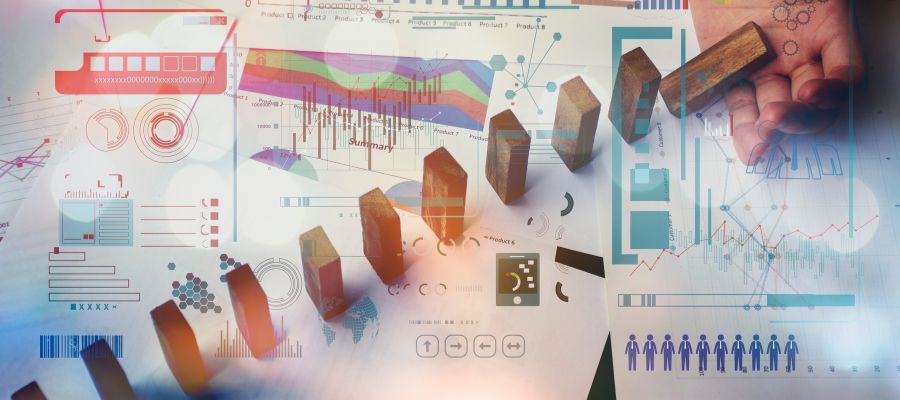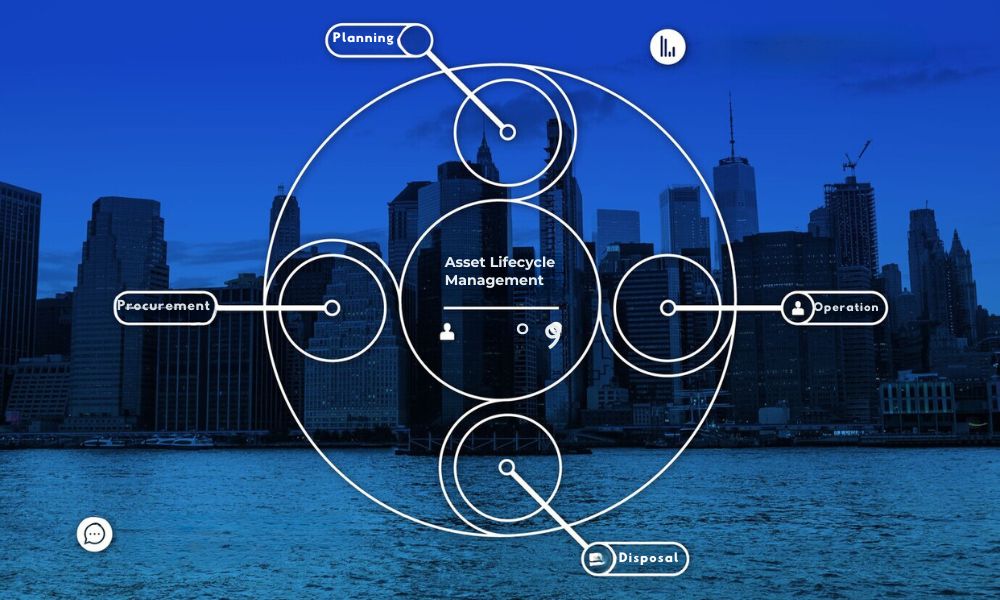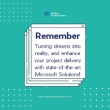Managing assets throughout the business lifecycle has been crucial for sustained success.
The discipline of Asset Lifecycle Management (ALM) has become increasingly prominent, offering businesses a strategic approach to handle their resources efficiently and effectively.
In this blog, we look into the changing dimensions of ALM, exploring trends, innovations, and its role in driving business integration, strategic decision making, and, ultimately, sustainable growth.
What Is Asset Lifecycle Management (ALM)?

Asset Lifecycle Management (ALM) includes the systematic approach of managing assets from acquisition through disposal. In the context of IT, it involves overseeing the lifecycle of hardware, software, and other technology-related resources.
This comprehensive process includes planning, procurement, utilisation, maintenance, and retirement of assets, ensuring optimal performance and value extraction throughout their lifespan.
Stages of Asset Lifecycle Management (ALM)

ALM typically comprises several distinct stages, each playing a critical role in asset optimization:
1. Planning and Acquisition
This initial stage involves identifying the organisation’s needs, evaluating available assets, and strategically acquiring resources that align with business objectives.
2. Deployment and Utilisation
Assets are deployed across the organisation and utilised according to predefined workflows. Efficient utilisation ensures maximum productivity and returns on investment.
3. Maintenance and Support
Regular maintenance and support activities are conducted to uphold asset performance, minimise downtime, and address any issues promptly.
4. Upgrades and Enhancements
As technology changes, assets require upgrades or enhancements to maintain competitiveness and functionality within the business environment.
5. End-of-Life Management
Assets reach the end of their useful life or are outdated, requiring proper disposal or replacement strategies to reduce risks and optimise resource utilisation.
Steps in the Asset Lifecycle Management (ALM) Process

1. Assessment and Planning
Conduct a thorough evaluation of existing assets and define strategic objectives to guide ALM initiatives.
2. Procurement and Deployment
Acquire assets according to predefined requirements and deploy them across the organisation following established protocols.
3. Monitoring and Maintenance
Implement monitoring tools and schedules to track asset performance, address issues promptly, and ensure optimal functionality.
4. Optimization and Upgrades
Evaluate asset performance and consider upgrades or enhancements to align with evolving business needs and technological advancements.
5. End-of-Life Management
Develop clear policies and procedures for asset disposal or retirement, ensuring compliance with regulations and minimising environmental impact.
Business Integration Through Asset Lifecycle Management (ALM)

Asset Lifecycle Management (ALM) catalyses business integration by providing a unified framework for managing resources across the organisation.
Through effective ALM practices, businesses can break down silos, improve collaboration, and optimise resource allocation to align with overarching business goals.
This integration fosters synergy among different departments, resulting in streamlined processes, enhanced efficiency, and accelerated growth
1. ALM facilitates collaboration by providing a centralised platform for asset management.
2. Integration of asset data across departments enhances visibility and transparency.
3. Streamlined processes improve communication and decision-making, driving business alignment.
Strategic Decision-Making Enabled by Asset Lifecycle Management (ALM) Insights

Asset Lifecycle Management (ALM) gives organisations valuable insights into asset performance, usage patterns, and lifecycle trends.
By leveraging this data-driven approach, businesses can make informed decisions regarding asset investments, upgrades, and retirement strategies.
ALM insights enable proactive risk management, identification of cost-saving opportunities, and alignment of resources with evolving business priorities, thereby driving sustainable growth and competitiveness.
1. ALM provides actionable insights into asset performance and lifecycle trends.
2. Strategic decision making enhances agility and adaptability in response to market dynamics.
3. Proactive risk management minimises potential disruptions and maximises asset value.
The Role of a Business Growth Consultant in Asset Lifecycle Management (ALM) Implementation

A consultant with expertise in asset management can offer strategic advice, best practices, and customised solutions tailored to the organisation’s unique needs and objectives.
From assessing current asset management practices to designing and implementing ALM strategies, a consultant plays a pivotal role in driving successful outcomes.
By leveraging their industry knowledge and experience, businesses can navigate complexities, overcome challenges, and unlock the full potential of Asset Lifecycle Management (ALM) to fuel sustainable growth and innovation.
1. A business growth consultant provides specialised expertise in ALM implementation.
2. Customised solutions are tailored to the organisation’s specific goals and challenges.
3. Consultants offer ongoing support and guidance to ensure successful ALM integration and optimization.
Benefits of Asset Lifecycle Management (ALM)

Implementing a robust ALM strategy offers numerous benefits to organisations:
1. Cost Optimization
By systematically managing assets, organisations can minimise unnecessary expenditures, optimise resource allocation, and reduce the total cost of ownership.
2. Risk Mitigation
ALM facilitates proactive risk management by identifying potential issues, ensuring regulatory compliance, and implementing effective security measures throughout the asset lifecycle.
3. Improved Decision-Making
Access to comprehensive asset data empowers organisations to make informed, data-driven decisions regarding investments, upgrades, and resource allocation, driving strategic growth and competitiveness.
Conclusion
At Walter & Associates, we’re here to make Asset Lifecycle Management (ALM) easy for you. We know how important it is to manage your assets well.
Our team will help you work out the best ways to take care of your assets, from the time you purchase it, to when it’s time to say goodbye.
We’ll work with you every step of the way to make sure everything runs smoothly and you get the most out of your assets. So, let’s team up and make managing your assets a breeze!
Effective Asset Lifecycle Management (ALM) is a cornerstone for sustainable growth and competitiveness as businesses navigate an increasingly complex and dynamic marketplace.
By adopting the latest trends and innovations in ALM, organisations can streamline operations, enhance decision-making processes, and look for new business integration and expansion opportunities.
As a trusted business growth consultant, I recognize the pivotal role of ALM in driving strategic initiatives, which is essential for organisations striving to thrive in the digital age.






















